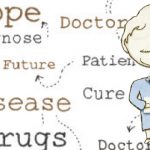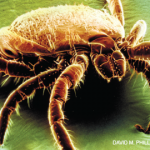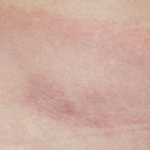Using the physical-component summary score of the RAND-36 Health Status Inventory (RAND SF-36), the study looked at health-related quality of life (primary outcome) among the three groups at the end of 14 weeks of total treatment. The study also looked at quality of life at 26, 40 and 52 weeks after the start of treatment.
Based on a modified intention-to-treat analysis, the study found no significant differences between the three groups at the end of the treatment period (see Tables 1 and 2, above).
Over time, these results were similar, with no differences found between the treatment groups and placebo at 26, 40 and 52 weeks.
Along with no differences in the major outcome of the study, the study also did not find any significant differences in secondary outcomes, which looked at mental aspects of health-related quality of life and fatigue. The side effect profile of all study groups was also similar.
Take-Home Message

Dr. Kullberg
“Three months of antimicrobial therapy does not provide additional clinical benefit to patients reporting persistent symptoms of pain, fatigue or cognitive dysfunctioning attributed to prior Lyme disease,” says Dr. Kullberg. “These patients need customized care, not just a prescription for antibiotics.”
As to what customized care looks like, Dr. Melia gives some insight in his editorial.2 “We do not know what is truly helpful,” he said. “Our personal approach is centered on making thorough assessments for alternative diagnoses, such as sleep disorders, and providing recommendations borrowed from practices in general medicine.”
Further strategies are needed to provide more options for these patients, he says, adding that recent research indicates a differential gene expression in Lyme disease compared with other acute infections that suggests that cytokine or metabolic changes occur in patients after acute infection with Lyme disease.
Until further research provides better ways to treat these patients, he says he hopes the findings of the current study will cause clinicians to reconsider the use of prolonged antibiotic therapy.
“When treating infections resulting in illness and symptoms, antibiotics yield benefit within one to three months,” he says. “Lack of improvement within this time frame is further evidence that longer therapy will not result in improvement, particularly if not seen initially.”
Mary Beth Nierengarten is a freelance medical journalist based in Minneapolis.
Resources
- Berende A, ter Hofstede HJM, Vos FJ, et al. Randomized trial of longer-term therapy for symptoms attributed to Lyme disease. N Engl J Med. 2016 Mar 31;374(13):1209–1220.
- Melia MT, Auwaerter PG. Time for a different approach to Lyme disease and long-term symptoms. N Engl J Med. 2016 Mar 31;374(13):1277–1278.



